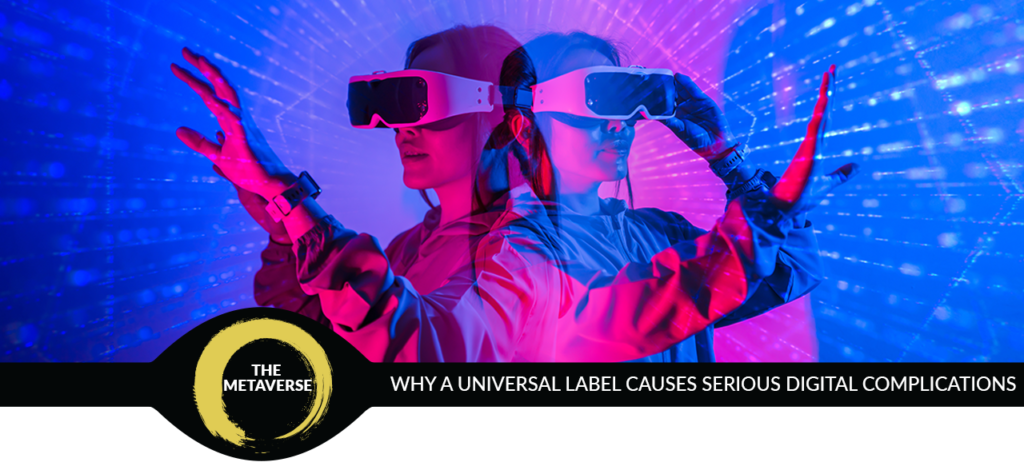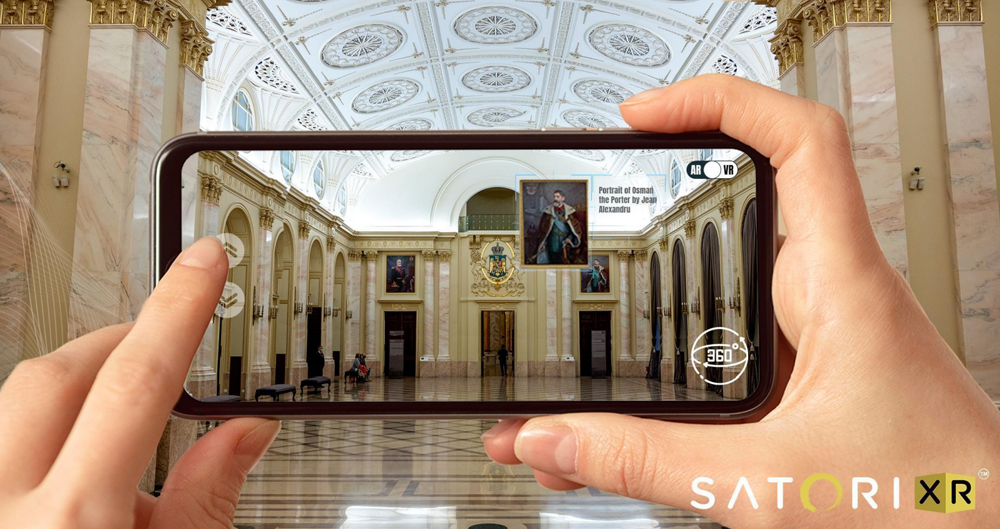
While the concept of Metaverses has been around for some time, you can find early instances in Snow Crash, a sci-fi novel by Neal Stephenson published in the ’90s. Early community-orientated games such as Second Life also mention the term; however, it only became a household name in October 2021 when Mark Zuckerberg announced that Facebook was changing its name to Meta, with a vision to ‘bring the metaverse to life’.
The word, or phrase instead, rapidly gained popularity worldwide and has quickly become known as the “future of the internet”; creating a link between digital and physical realities has become a priority for many. Propelled by over two years of global lockdowns due to the pandemic, the concept has increased in feasibility and popularity.
There are several issues around the more than blase usage of the term ‘metaverse’ that has arisen from Meta’s announcement, that impact the other valuable work being done in this space.
The there will never be a single metaverse but rather many metaverses.
- Mahesh Ramamurthy, CEO and Co-Founder of SatoriXR
Genericization, is what happens when your brand name becomes the category name, for example Escalator, Kerosine, Xerox or Jacuzzi and in some cases, it can result in companies losing their trademark.
Some see the metaverse as the future of the internet, and Meta’s strategic move in naming their company Meta, might be an attempt to hijack the term for the benefit of the brand. Despite the clever marketing move, the fundamental problem is that there will never be a single metaverse but rather many metaverses.
An XR device, or extended reality device, is key to experiencing the metaverse. XR technology adjusts human-to-screen technology by diong one of three things. Either by a. immersing you in the digital environment (VR), b. augments your surroundings (AR) or c. both of these aspects (MR).
As a futuristic concept, metaverses may be tentatively defined as fully immersive, continuous three-dimensional society-like environments that integrate both physical and virtual worlds and which are accessible through the use of XR devices. A vital element of this is that it is a continuous environment. Ergo, one that should resume digitally and physically, simultaneously, at all times, which, as you can imagine, is impossible given the available technology (at least for now).
According to ScienceDirect (2022) a recent commentary by prominent XR experts Philipp Rauschnabel, Reto Felix and Chris Hinsch outlined three characteristics of a metaverse:
A three-dimensional (3D) environment that people experience via immersive XR technologies, like AR and VR. People cannot experience metaverse environments on devices such as computers or smartphones with their current technology.
A digital society or societies that share similarities with real-world, physical communities; these similarities include:
Socialisation
The presence of individuals
A legal structure in some shape or form,
Transactions between individuals using alternative forms of exchange, such as NFTs or cryptocurrencies.
Decentralisation of digital environments is critical; conceptualising that a current social media platform or interactive games like Roblox, Minecraft or Fortnight are metaverse environments is inaccurate.
Now that we are aware of what metaverses are, we can go on to determine what they are not.
Metaverses may one day become more than a futuristic concept and rely on XR technology, but until then, we cannot label everything in the digital space as ‘metaverse’.
This blanket labelling confuses XR technologies such as AR, VR and MR, which have evolved and advanced rapidly over the last few decades. XR will give us accessibility to metaverses rather than merely functioning as one of their components. It will only occur when (and if) metaverses become something more than a theoretical concept.
Having the term ‘metaverse’ thrown around and referencing other digital realities by such a large company creates confusion, preconceptions and false expectations. Nonchalant use of the word also reduces the ability of smaller firms to compete in the space. This blase use of the term metaverse’ caused an extensive effect on how we understand this technology and related supporting technology.
If you use a word to mean everything, it may mean nothing.
- Mahesh Ramamurthy, CEO and Co-Founder of SatoriXR
In November 2021, Frances Haugen, a former product manager at Facebook who turned whistleblower, testified that Meta had changed its name. Haugen states that Meta pushed the metaverse concept to draw attention away from the intense scrutiny they faced over the known adverse effects of social media.
This action forced Meta’s hand, causing them to act forthcomingly regarding their privacy and sharing policy, while governments worldwide introduced more stringent regulations surrounding virtual privacy. Conceptualising a new, 3D form of the internet was exciting and inspiring to some. In contrast, those who fear Meta will continue to increase their level of control over their platform users, and these spaces will remain unsafe.
The above concern significantly impacts how others perceive digital reality and leads to false expectations of Meta and other platforms or products in the space. Dominant, globally recognised companies like Meta and their narration of the term ‘metaverse’ significantly impacts negative and positive perceptions of a new social virtual environment. This narration obstinately and consciously (or unconsciously) paints XR with the same brush.
And, as you will find out if you haven’t already, XR is not, and should not, be limited to just one currently unattainable name or concept.
The term eXtended reality, more commonly known as XR, is already a viable and established technology. As an umbrella term, XR is composed of other digital environments, such as augmented reality (AR), virtual reality (VR) and mixed reality (MR).

Fig. 1 eXtended reality (XR) is used across a diverse range of industries.
The use of XR is not limited to only supporting social interactions, gaming or slightly more uncomfortable virtual hangouts with a new colleague. These technologies are used effectively in automotive, manufacturing, aviation, engineering, and industries. The uses for these technologies range from digital twins to product design, CAD, development and prototyping, and extensive 3D catalogues.
Apart from several museums using XR during lockdown to allow visitors from around the world to experience their curations, it is also successfully used in other industries, such as education and training, and extensively in healthcare. XR technology continues to advance rapidly; numerous tech companies like SatoriXR want to establish a bridge between virtual technology and reality.
The goal is to create a connected world that enables innovation, learning and more.

Fig. 2 During the height of lockdowns brought about by the pandemic, museums and art galleries around the world used XR technology to increase accessibility.
Technical vocabulary constantly evolves and encompasses many technologies and elements; however, ‘Metaverse’ is a term that is unattainable at present. The word also comes with several negative connotations that can impede and reduce the positive impact that XR technology can provide now and in the future.
When or if metaverses finally materialise, we are all for them. But, for now, we believe that XR products and services that focus on helping people in real-life should be our focus and priority.
Are you interested in exploring how XR can take your inspiring ideas or products and support innovation, increase revenue and save you time, today?
© 2024 SatoriXR Private Limited